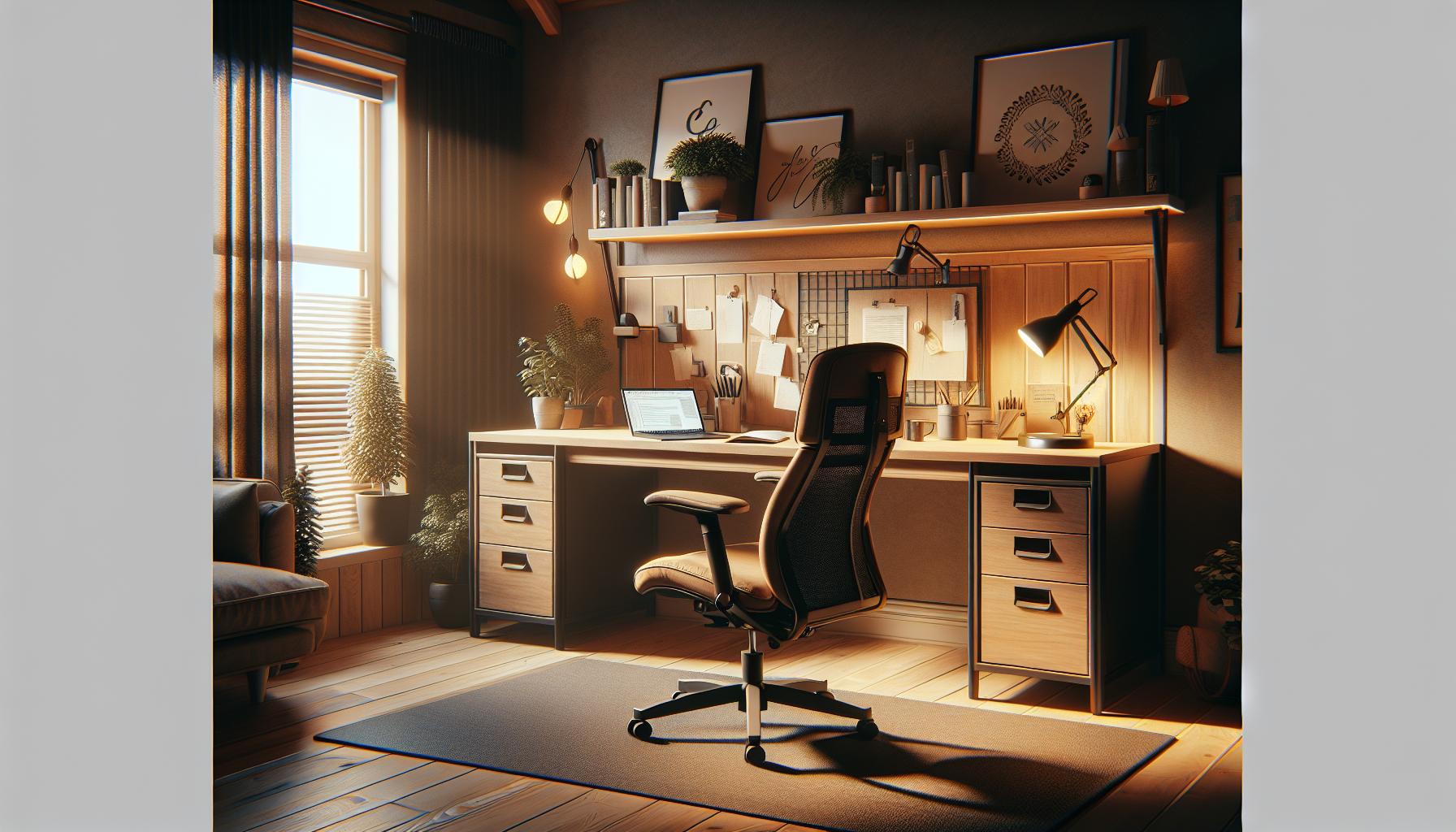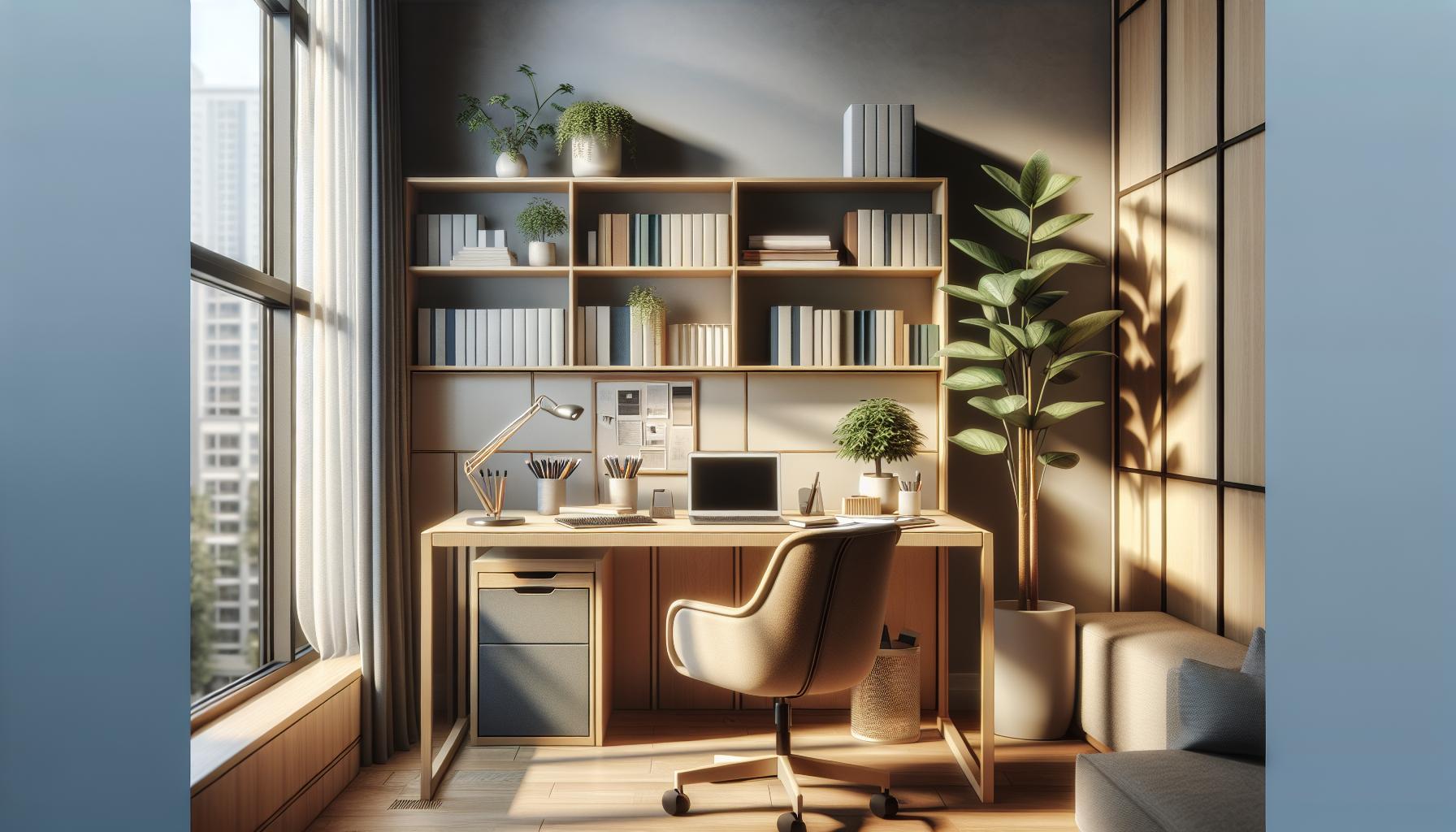In the world of writing, the environment plays a crucial role in shaping creativity and productivity. Whether it’s a cozy nook at home or a bustling café, the right writing space can ignite inspiration and enhance focus. Writers often find that their surroundings influence not just their mood but also the flow of ideas.
Exploring various writing spaces reveals how personal preferences and individual habits come into play. Some thrive in silence while others seek the ambient hum of conversation. Understanding these dynamics can help writers optimize their environments, leading to more fulfilling and effective writing sessions.
Key Takeaways
- Importance of Environment: Writing spaces significantly shape creativity and productivity, impacting the flow of ideas and overall writing experience.
- Types of Writing Spaces: Various environments, including home offices, libraries, parks, and cafés, cater to diverse preferences and needs, influencing individual writing styles.
- Personal Preferences Matter: Understanding personal inclinations toward different writing spaces—whether quiet or lively—can help writers optimize their environments for better focus and creativity.
- Designing Effective Spaces: Thoughtful layout, ergonomic furniture, and balanced lighting are crucial components that enhance comfort and productivity in writing spaces.
- Creativity Triggers: Unique attributes of writing spaces, such as natural vistas in parks or social ambiance in cafés, can inspire fresh ideas and combat writer’s block.
- Focus and Control: Tailoring writing environments to minimize distractions allows for sustained concentration, helping writers maintain productivity over longer sessions.
Writing Spaces
Writing spaces encompass various environments where individuals engage in the writing process. These spaces include home offices, libraries, parks, and cafés, each offering distinct atmospheres that can influence creativity and productivity. Writers often gravitate toward specific settings based on personal preferences and their unique writing habits.
Home offices provide controlled and familiar surroundings, enabling focused writing sessions. Libraries offer quietude and solitude, promoting concentration. Parks allow writers to connect with nature, fostering inspiration through sensory experiences. Cafés create a lively ambiance, often sparking ideas through social interactions and the hustle of daily life.
Understanding one’s inclinations toward these environments plays a crucial role in maximizing the effectiveness of writing sessions. By evaluating the characteristics of different spaces, such as comfort, noise levels, and accessibility, writers can make informed choices that enhance their creative processes. Recognizing these aspects aids in crafting a suitable environment conducive to writing.
Importance Of Writing Spaces

Writing spaces significantly influence creativity and productivity, affecting how ideas develop and flow. Choosing the right environment can lead to enhanced writing experiences and results.
Creativity And Inspiration
Creativity thrives in environments that evoke inspiration. Unique attributes of different writing spaces trigger fresh ideas. For instance, parks offer natural vistas that soothe the mind, creating room for creativity. Cafés, with their vibrant atmosphere, encourage interaction and brainstorming. Writers often find that shifting locations combats writer’s block, as new sights and sounds stimulate originality. Recognizing personal preferences enhances creative output; some may prefer serene settings, while others find energy in bustling surroundings.
Focus And Productivity
Focus and productivity hinge on the suitability of the writing space. Home offices enable tailored environments, allowing control over distractions and comfort. Libraries, known for their quietude, inherently promote concentration and deeper engagement with the work. Certain cafés may provide a balance of background noise that helps maintain focus without hindering productivity. Parameters such as lighting, seating comfort, and accessibility also contribute to how effectively writers perform tasks. Selecting spaces that align with individual working styles boosts overall efficiency.
Types Of Writing Spaces

Different writing spaces serve unique needs and preferences, impacting creativity and productivity. Here are several types of writing environments that cater to varying styles and requirements.
Home Offices
Home offices provide a controlled atmosphere ideal for focused writing. These spaces allow for personalized decor, lighting, and organization, enhancing comfort and efficiency. Writers can minimize distractions with designated work areas. Essential components include ergonomic furniture, adequate storage, and effective lighting. By establishing a routine in a home office, writers can foster discipline and consistency, leading to improved output.
Co-Working Spaces
Co-working spaces offer collaborative environments that encourage networking and idea exchange. These shared spaces promote community and creativity through interaction with other professionals. Writers benefit from a dynamic atmosphere, accessing resources like meeting rooms and creative workshops. Flexibility in terms of membership options and amenities makes co-working spaces appealing for those seeking inspiration outside traditional settings. Focused zones within these spaces can help writers concentrate amidst the hustle and bustle.
Cafés And Public Areas
Cafés and public areas create vibrant settings that stimulate creativity through social interaction and ambient noise. The background sounds of conversation and clinking mugs can promote a sense of inspiration. These environments cater to writers seeking a casual and energizing atmosphere. Accessibility to refreshments and companionship gives writers a break from isolation. However, managing distractions can be challenging; choosing quieter times or corner tables may enhance focus while still enjoying the lively atmosphere.
Designing An Effective Writing Space

Creating an effective writing space is essential for maximizing creativity and productivity. Thoughtful consideration of layout, lighting, and ambiance plays a significant role in the overall writing experience.
Layout And Organization
Effective layout and organization enhance focus and efficiency. Writers benefit from arranging their workspace to minimize distractions and optimize workflow.
- Desk Positioning: Place the desk in a spot with limited traffic to reduce interruptions. Positioning the desk near a window provides natural light, which may enhance mood and reduce fatigue.
- Organization Tools: Utilize shelves, drawers, and organizers to keep materials within easy reach. Clear clutter regularly to maintain an open, inviting work environment.
- Zoning Areas: Designate specific areas for different tasks, such as writing, brainstorming, and research. This separation helps the mind transition between various activities more easily.
- Ergonomic Considerations: Choose chairs and desks that promote good posture to prevent discomfort. Ergonomic arrangements support longer writing sessions without strain.
Lighting And Ambiance
Proper lighting and ambiance contribute significantly to the writing process. Writers should prioritize these elements to create a conducive environment.
- Natural Light: Favor spaces with ample natural light, as it can boost mood and promote a healthier atmosphere. If natural light is limited, consider full-spectrum lamps that mimic sunlight.
- Adjustable Lighting: Incorporate adjustable lighting options to achieve the desired brightness based on time of day or task. Dimmable lamps provide flexibility for different writing moods.
- Comfortable Colors: Choose wall colors that evoke inspiration and calmness. Soft, neutral tones often promote concentration, while vibrant accents may stimulate creativity.
- Background Noise: Understand personal preferences for sound. Some writers thrive in silence, while others benefit from background music or white noise to maintain focus and drown out distractions.
By thoughtfully designing the writing space with layout, organization, lighting, and ambiance in mind, writers can create a productive environment that enhances the writing experience.
Finding The Right Writing Space
Finding the right writing space is essential for fostering creativity and enhancing productivity. Each environment offers unique benefits that cater to individual preferences and writing styles. By thoughtfully selecting and designing these spaces, writers can significantly improve their creative processes.
Whether it’s a cozy home office or a bustling café, the right atmosphere can spark inspiration and help overcome challenges like writer’s block. Understanding personal needs regarding comfort, lighting, and noise can transform any location into a productive haven. Ultimately, the journey to discovering the perfect writing space can lead to more enjoyable and effective writing experiences.